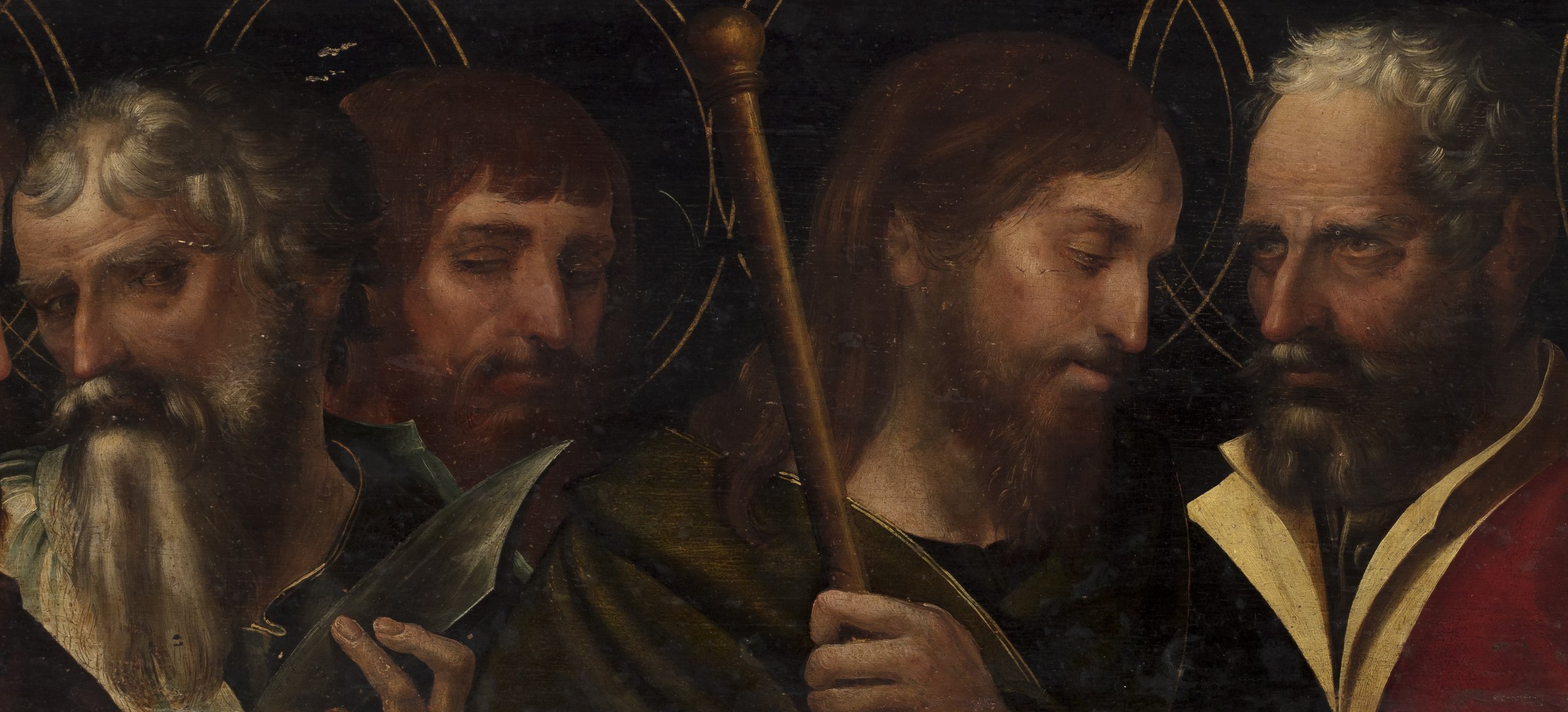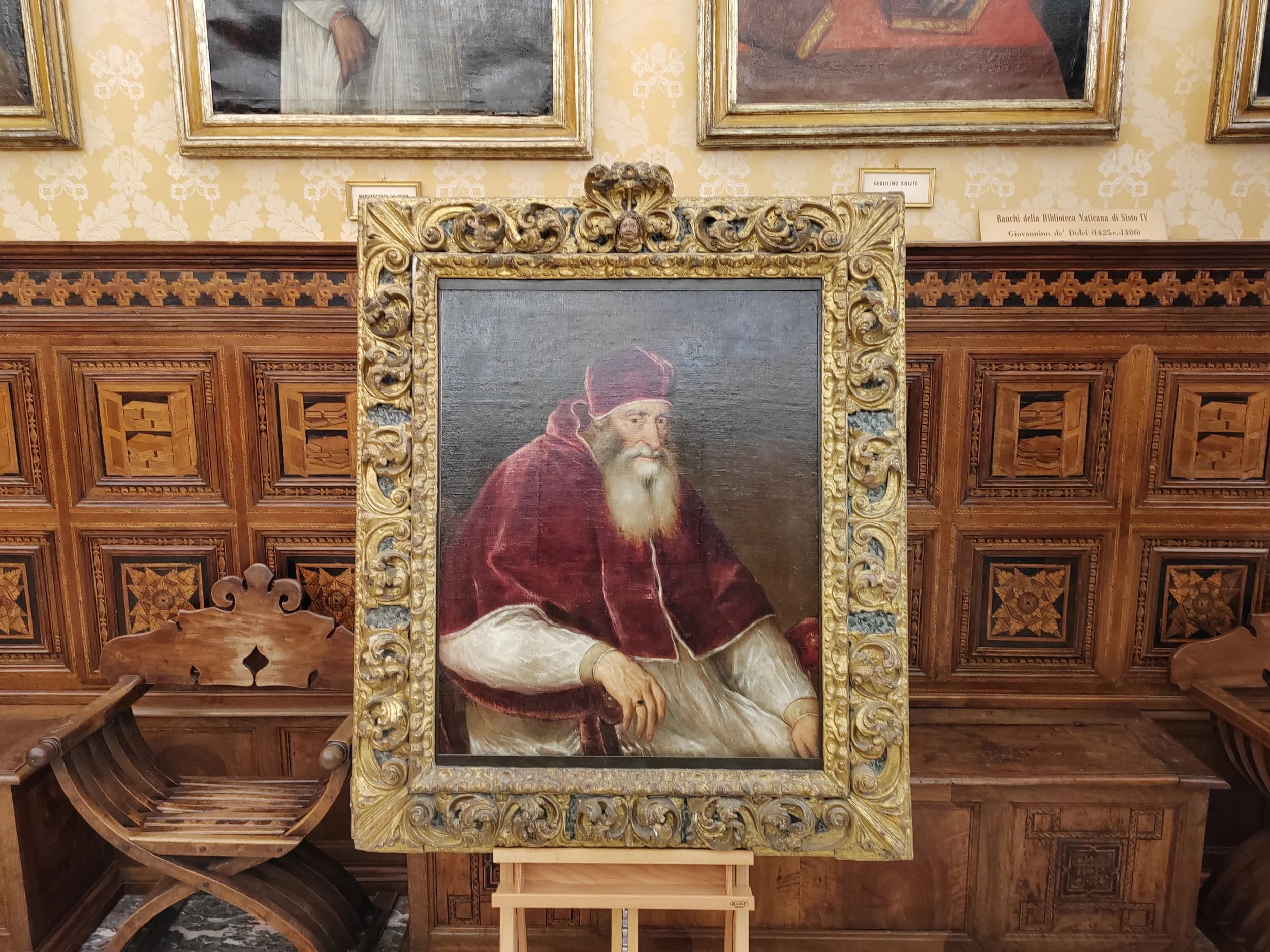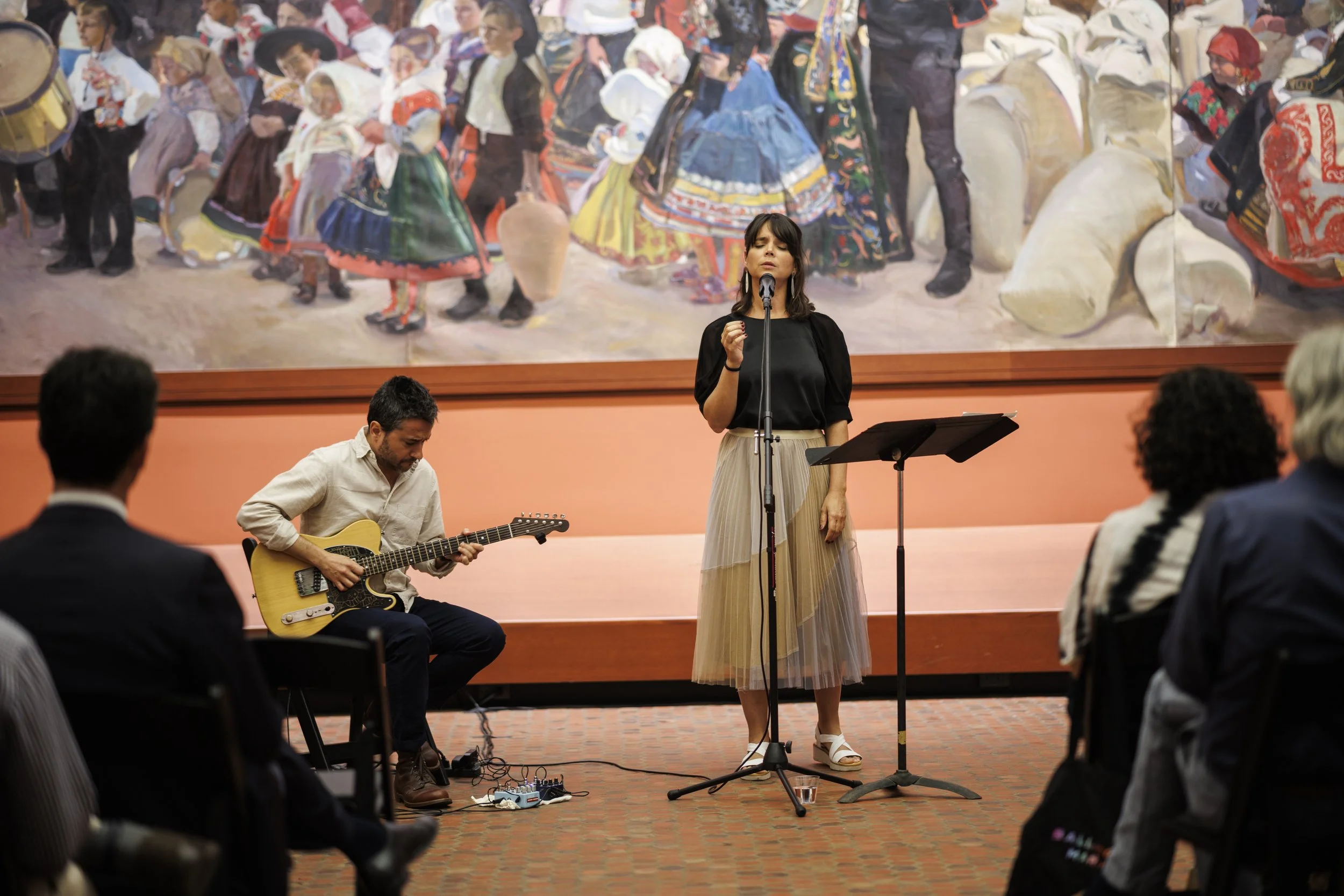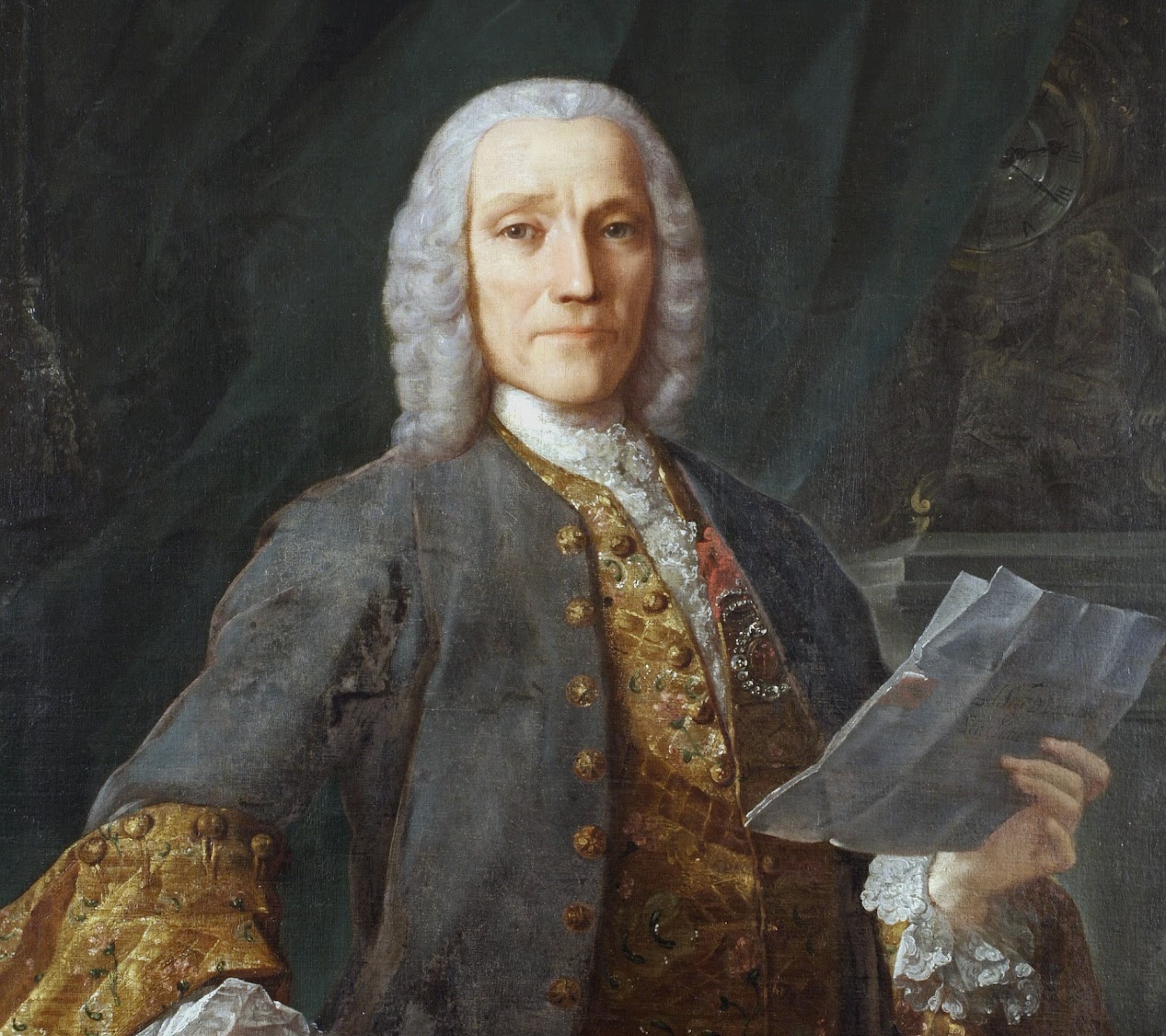
PUBLIC PROGRAMME
Pope Paul III by Titian at the Vatican Library
The Gaudium Magnum Foundation was proud to loan Portrait of Pope Paul III by Tiziano Vecellio, known as Titian, to the exhibition Codex, organized by the Colnaghi Foundation and held at the Vatican Apostolic Library from May 23 to June 2.
Painted around 1545–46, this commanding portrait captures the resolute gaze of the Pope who convened the Council of Trent, distinguished by his signature red camauro. Likely created during Titian’s stay in Rome, the work stands as a testament to both political power and artistic mastery.
Set against the stunning backdrops of the Vatican Library’s Sistine Hall and Vestibule, Codex brought together Old Master paintings and rare historical documents in celebration of the Jubilee Year. The exhibition offered a fresh lens on art, memory, and shared cultural heritage - placing the Gaudium Magnum Foundation’s Titian in dialogue with masterpieces from across Europe and the rich archives of the Vatican.
As part of its ongoing Lending Library Program, the Foundation is committed to making its collection travel — connecting stories, institutions, and audiences across borders and through time.
Luís de Camões: A Journey Through Words and Worlds
Hispanic Society Museum & Library, Lower Audubon Terrace (New York)
26.06.2025 – 03.09.2025
"Camões: Who are you?" This question, posed to the legendary Portuguese poet Luís de Camões, invites us to reflect on identity, curiosity, and the pursuit of knowledge. To wrap up the program organised by the Foundation and HSM&L to celebrate Camões’ 500th anniversary, Isabel Almeida curated an exhibition which examines the life, travels, and literary legacy of Camões, an explorer in both poetry and reality.
The 16th century was a period of transformation, an era of Discovery. As Portugal expanded its maritime influence, cartographers reshaped world maps, and science flourished. Camões lived through this era, capturing its spirit in Os Lusíadas, his epic poem chronicling Vasco da Gama’s voyage to India. Inspired by classical literature yet deeply modern in its vision, his work embodies the tensions between past and present, myth and reality, exploration and introspection.
This accessible exhibition illustrates how the world was reimagined. How continents evolved in representation and how cartography influenced Camões' poetic descriptions of the seas. Who is the true hero of Os Lusíadas? Is it Vasco da Gama, the Portuguese nation, or Camões himself? Through rich storytelling, the exhibition examines the poet’s vision of heroism, from the mythical Adamastor to his reflections on fate, justice, and human ambition.
His works blend classical epic with Iberian traditions, lyrical sonnets with biting social critique. Discover how his poetry wove together diverse influences to create a lasting legacy. Offering a fresh perspective on his impact, visitors are invited to engage with his words and ideas in new ways. Join us on this literary voyage—where words become maps, poetry meets history, and Camões’ voice echoes across time.
The opening night at the HSM&L featured a mesmerizing performance by Sara Serpa (voice) and André Matos (electric guitar). On view through early September on the museum’s terraces, the exhibition invites you to explore Camões’ enduring influence, from the Age of Discovery to his immortal poetry, alongside rare books and maps from the HSM&L’s world-renowned collection.
A standout moment includes a powerful installation of Camões’ iconic sonnet “Amor é um fogo que arde sem se ver” — a timeless reflection on the beauty and contradictions of love.
A Cross-Cultural Dialogue: Italy and Portugal Through the Lens of Music
The Gaudium Magnum Foundation – Maria and João Cortez de Lobão – is proud to support a new initiative in collaboration with the National Museum of Music highlighting the enduring cultural exchange between Italy and Portugal. At the heart of this dialogue is the legacy of Domenico Scarlatti, whose most influential chapter unfolded not in Italy, but in Portugal, where he shaped a generation of musicians and transformed the royal court’s musical landscape.
This cross-cultural connection was first catalysed by the Portuguese Queen Maria Anna of Austria, who brought with her the Italian language and musical traditions of the Viennese court, elevating music to a powerful diplomatic tool and a symbol of refinement. Under her patronage, Italian music flourished in Portugal, fostering an artistic bridge between the two nations. Scarlatti’s presence in Lisbon, and composers like Carlos Seixas, embody this vibrant cultural intersection.
To honor this legacy, the Foundation and Museum are launching a special recording project that revives the authentic soundscape of Baroque Portugal. The first release marks the anniversaries of Alessandro and Domenico Scarlatti, bringing their music to life on a rare 1758 Portuguese harpsichord by Joaquim José Antunes—a masterpiece of 18th-century craftsmanship. This initiative features contemporary Portuguese composer António Pinho Vargas and acclaimed French harpsichordist Béatrice Martin, joining forces to unite past and present. The premieres, in Lisbon and Naples, underscore the enduring ties between the two countries.
Fulbright Scholarships for Professors and PhD Researchers – Next Edition
Applications for the Fulbright Scholarship for Professors and PhD Researchers are now closed. We warmly thank all applicants for their participation in this initiative which supports research and teaching at universities, museums, and research centers in the United States. The Gaudium Magnum Foundation, in partnership with the Fulbright Commission, will continue to offer this opportunity to support projects in Art History, Museology, and Curatorial Practice, with a particular focus on the art of Portuguese-speaking countries in the Early Modern period.
Next edition: Applications for the 2026 cycle will open in the fall of 2025 and remain available until the end of January 2026. This scholarship, lasting between 3 and 9 months, enables selected candidates to broaden their academic horizons, deepen their research, and contribute to the international visibility and preservation Portuguese art. This initiative reflects our ongoing commitment to fostering academic and scientific exchange between Portugal and the United States. Stay tuned for updates!

Are you curious to know how it all started?
Dive into to our Past Events page and discover the initiatives and projects that have shaped our journey so far and understand our vision through this video testimony recorded by Co-Founder Maria Cortez de Lobão.
Do you feel inspired and wish to know more?
Explore our YouTube Video Library — a rich repository of exclusive interviews, conferences, and accessible content that breaks down physical barriers.
THE FOUNDATION
The Gaudium Magnum Foundation is a nonprofit organization based in Lisbon, Portugal. Founded in 2018 by Maria and João Cortez de Lobão, the Foundation is dedicated to supporting culture, education, and research while actively engaging in various charitable endeavors. It recognizes the significance of cross-cultural exchanges as a means of building bridges, stimulating dialogue, and fostering social justice, and it is committed to upholding Portugal’s rich tradition of cultural internationalism.
As an ambassador for Portugal’s historical and cultural heritage, the Foundation promotes dialogue between local and international institutions and supports projects that explore the country's role on the global stage. It particularly focuses on the formation of Portugal’s cultural identity between the 14th and 18th centuries, examining its diplomatic ties and the circulation of models, ideas, and people.
Encouraging inter-institutional partnerships, the Foundation collaborates with museums, libraries, and research centers both in Portugal and abroad, including the Museu Nacional de Arte Antiga (Lisbon, Portugal), the Biblioteca Apostolica Vaticana (Rome, Italy), the Hispanic Society Museum & Library (New York, USA), and the Instituto Camões (Portugal).

THE COLLECTION
The Collection, put together by Maria and João Cortez de Lobão over the past two decades, currently includes more than 100 works of art by some of the finest European artists from the 14th to the 18th centuries. The Cortez de Lobão believe these works are essential not only for academic study but also as sources of inspiration, and they are dedicated to making them accessible to a wide audience. Their extensive efforts to expand the Collection encourage research and reflect their commitment by presenting it in various contexts.
To further this mission, an Online Collaborative Catalogue is being developed. This open cross-disciplinary resource will be continuously updated and will serve as a valuable tool for students and scholars specialized in European painting, while also allowing enthusiasts to engage in interactive exploration. By loaning artworks from the Collection, we aim to contribute to various national and international temporary exhibitions. This collaboration with diverse artistic and museum institutions enhances access to the works and broadens our reach to wider audiences.

Subscribe our Newsletter
Receive periodic news about our initiatives and activities.
We treat your information with privacy.
(*) Mandatory field.
Rua de São Bernardo 31, 1200-823 Lisbon, Portugal
(+351) 218 075 070
info@gaudiummagnum.org
© 2025 Fundação Gaudium Magnum - Maria e João Cortez de Lobão














